Get it on, bang a gong, get it on...
- T. Rex, 1971
Including the Sierra newts, I've already seen 21 native species/subs this year: 8 snakes, 4 lizards, 8 sallys and a frog.
Here are some of the notables...
So far, a Rubber Boa has stolen the seasonal show. The first I've found in the Santa Cruz Mountains, and a real charmer. He even gave me an excellent pose in defensive posture, with his naturally stubbed "fake head" held high.
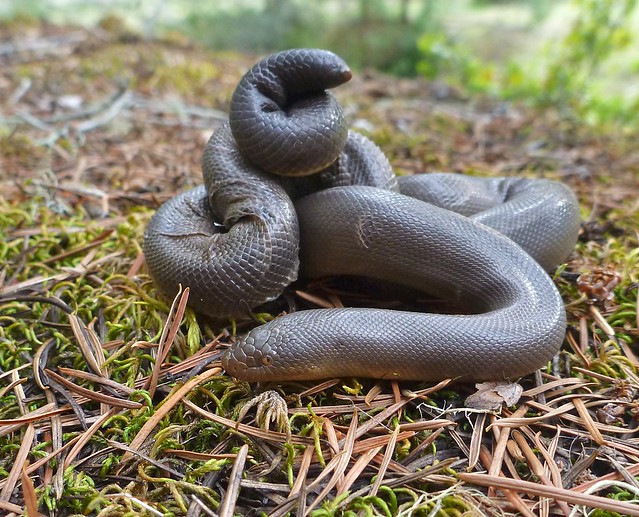
Rubber Boa, Charina bottae, Santa Cruz Mountains, CA
Since they spend a lot of time underground and nosing around, rubbers have tiny, tight scales. And their eyes are small and set flat, so they tend to turn and look at you broadside, like a whale.

But they are definitely constrictors, as this one showed by giving my finger a few wraps.
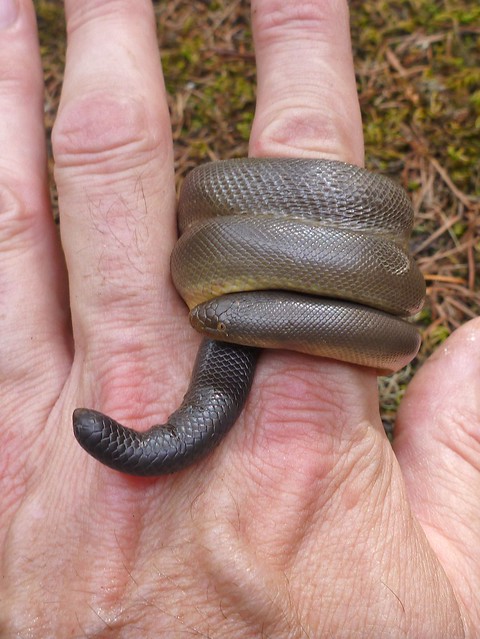
Does this mean we're engaged?
Another constrictor this week proved just as charming - a California Kingsnake. When I pulled her from the grass and put her down on the trail, she brought out the entire bag of tricks to amuse us - rearing up and striking like a cobra, while vibrating her tail like a rattler.
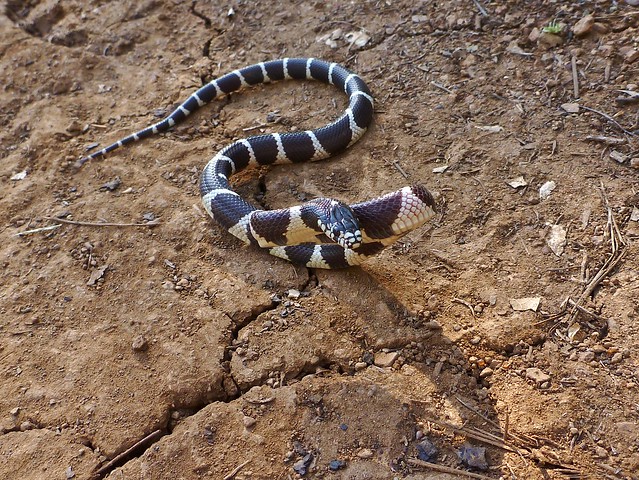
California Kingsnake, Lampropeltis californiae, Santa Cruz Mountains, CA
But they're all bluster unless you're a rodent, bird, lizard or snake. Especially when they can fit in your hand. Note the distinctive repeating pattern of white 1/2 bands.
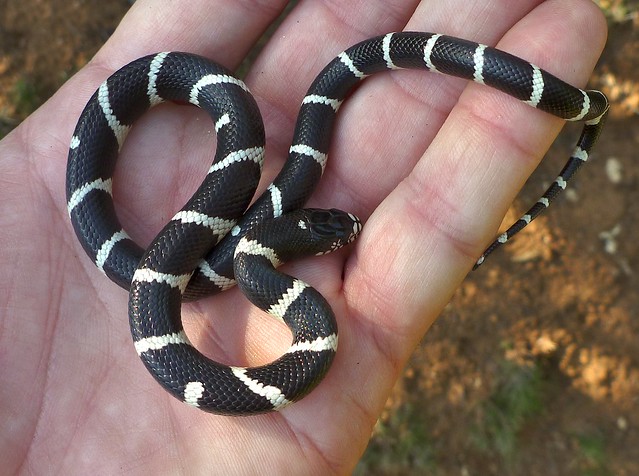
And, much like the rubber boa, she was also a bit of a finger strangler.
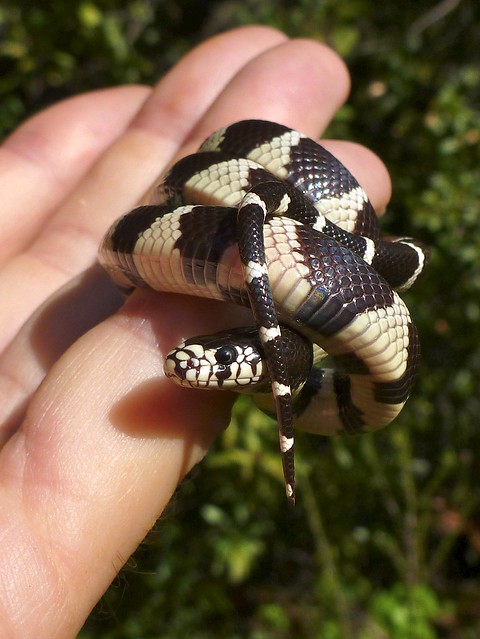
"Give up yet?"
Next up are 2 even smaller slithers - a Ring-necked Snake and a Sharp-tailed Snake. Both are typically shorter than 2 drinking straws set end-to-end, and can often slip through one. This ringneck was the largest I've ever seen, in fact, and may be an older snake. The ring on its neck was quite faded, and the belly and back very dark, yet freshly shed.
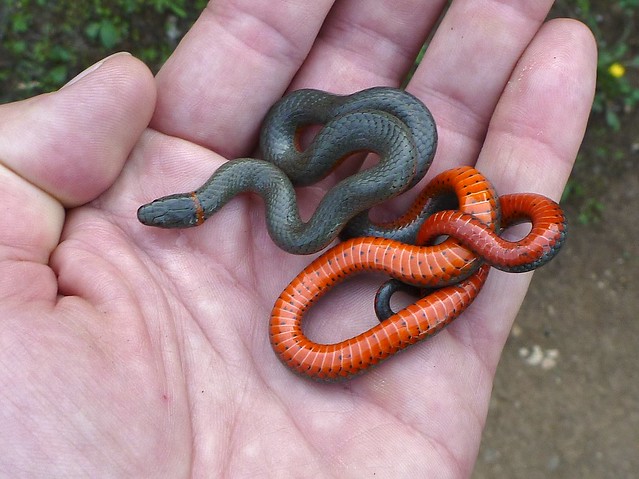
Ring-necked Snake, Diadophis punctatus amabilis, Santa Cruz Mountains, CA
The sharp-tail was obviously a good bit slimmer. Both generally live in grasslands and forest edges in burrows and leaf litter, and under rocks and logs, and hunt mini-prey (and their eggs), including slugs, grubs, slender salamanders, and small lizards and skinks. They pop up in spring after the rains, and then go to ground again once it gets hot and dry.
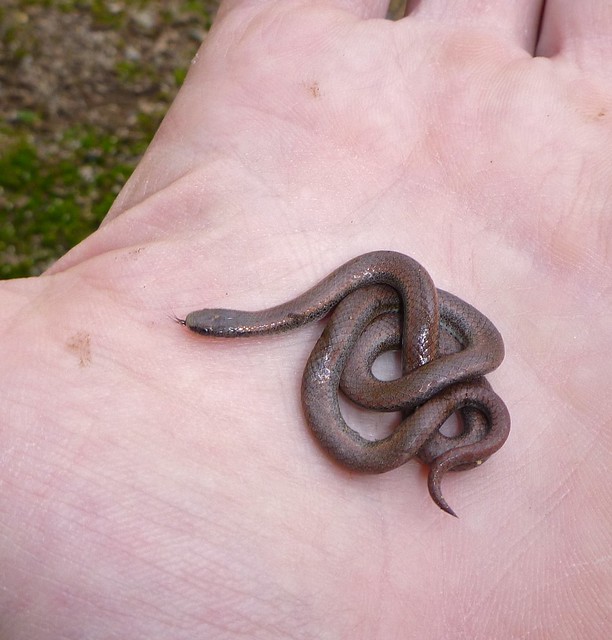
Sharp-tailed Snake, Contia tenuis, Sierra Nevada Mountains, CA
Speaking of hot and dry - here's another small snake I saw that needs little introduction, and is one that I definitely don't recommend holding in the palm of your hand.
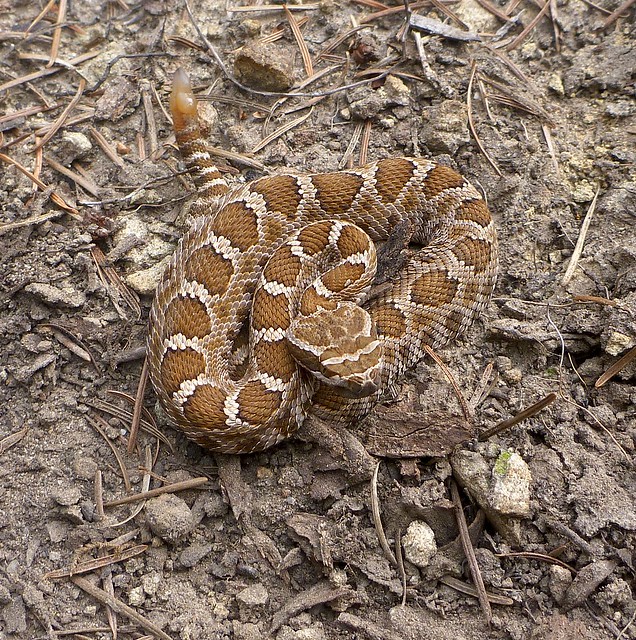
Northern Pacific Rattlesnake, Crotalus oreganus oreganus, Santa Cruz Mountains, CA
I've also seen 2 Ensatina salamander subspecies this spring - the Yellowed Eyed Ensatina of the Santa Cruz Mountains, and the Sierra Ensatina of the mid Sierra Nevada Mountains.
Unlike the newts, Ensatinas don't go to water to breed, and instead mate and lay their eggs on land in moist places, under logs and rocks, and in burrows and woodrat nests.
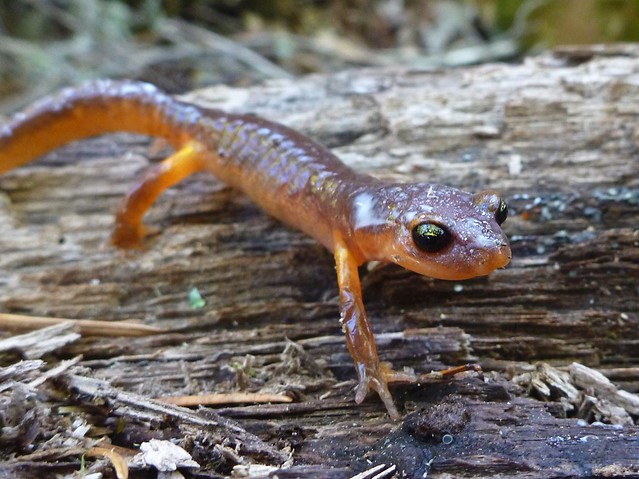
Yellow-eyed Ensatina, Ensatina eschscholtzii xanthoptica, Santa Cruz Mountains, CA
The Yellow-eyed was a bit pissy - giving me the arched back of their defensive posture, while also oozing neurotoxic milk out of her skin.
But the Sierran was much more relaxed and paparazzi-friendly. But with those striking black eyes, purple skin and orange splotches, she's so photogenic that she probably has to be.
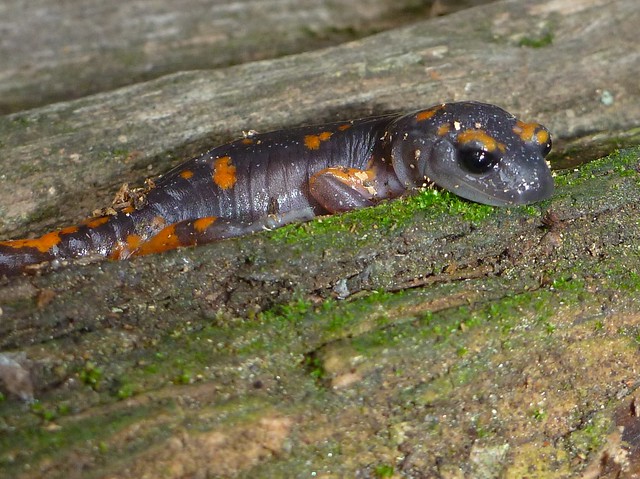
Sierra Ensatina, Ensatina eschscholtzii platensis, Sierra Nevada Mountains, CA
Last for this early season list - an alligator. Or at least a California wannabe.
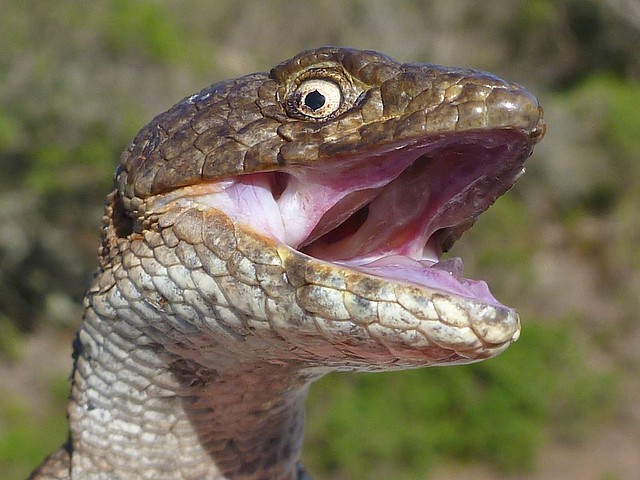
California Alligator Lizard, Elgaria multicarinata multicarinata, Santa Cruz Mountains, CA
For those curious - "herpeton" is ancient Greek for "crawling thing," and is even in the New Testament, in the Epistle to the Romans. And is thus the root of the terms herps and herpetofauna and Herpetology - the study of amphibians and reptiles.
====
References:
- T. Rex - Bang a Gong (Get It On)
- Online Etymology Dictionary - herpeton
- Wikipedia - Herpetology
- Robert C. Stebbins (Peterson Field Guides) - Western Reptiles and Amphibians
- California Herps - Rubber Boa
- California Herps - California Kingsnake
- California Herps - Pacific Ring-necked Snake
- California Herps - Sharp-tailed Snake
- California Herps- Northern Pacific Rattlesnake
- California Herps - Yellow-eyed Ensatina
- California Herps - Sierra Ensatina
- California Herps - California Alligator Lizard
- Nature of a Man (this blog) - Newt Dance
- Nature of a Man (this blog) - The Pursuit of Herpiness

Every year is a little different, huh? It's kind of funny how last year in your Pursuit post, you were excited at having found 6 snakes by May 4. What's the date today? March 29? How many snakes? 8. Yeah, cool. Plus, you've probably gotten better at finding them.
ReplyDeleteCindy also mentioned a while back at how tiny the ring-necked snakes are, but I remember the dead one I found towards Big Sur (ssp. vandenburghi) as being much larger. How long do you think the one pictured measures out to? Do you think the ssp. amabilis is particularly tiny?
Yes, every season is different and I go to different places. But the variability, difficulty and serendipity are things that make herps so great. If you could go to a place the same time each year and find all the local species they just wouldn't be as interesting.
DeleteI hear there are length variations between different Diadophis subspecies, but haven't really experienced it myself. I've seen a fair number and 90% are 10-14 inches in length. This one was around 20 inches.
Nice critter collection. For some reason the whale-rubber boa comparison brings me great amusement.
ReplyDeleteWorks though, doesn't it? The look of curiosity, shyness and serenity.
DeleteThose are some really great photos of some supremely beautiful creatures. I have a question concerning salamanders. In my youth in Santa Barbara we used to find what my friends and I called Arboreal Salamanders,(aneides lugubris). Is that still a valid name? Anyway, once in a great while we would find a fire engine red salamander of the same shape with tiny white spots that we assumed were Arboreal Salamanders also. Is that a known morph of the Arboreal Salamander?
ReplyDeleteThanks John. Yep, Aneides lugubris, the Arboreal Sally is still a valid species. But their juvies are typically black, so I'm guessing you guys may have found Monterrey Ensatinas, Ensatina eschscholtzii eschscholtzii, which are often crazy bright. Does that look right?
DeleteHere's are the correct links to the bright orange ensatina from Santa Barbara: View 1 and view 2.
Deletewow, that is an eye-popping gummy-style ensatina.
DeleteI've been checking for rattlers - the little ones seem to come out first - but I haven't seen them at their usual spots yet. My haunts are still pretty much salamandelicious. I couldn't get your "crazy bright" link above to work, so now I'm crazy curious.
ReplyDeleteNice! I'm in a herp class right now, we just went out for the first time this weekend "herping" the night away. It's still wicked cold and snowy here in Upstate, NY. Some parts of the state got 1' of wet, heavy snow last night! It's currently snowing here, but too wet to hold. But over the weekend we saw some Eastern Spotted Newts (Notophthalmus viridescens) and perhaps some Green Frog (Rana clamitans melanota) tadpoles left over from last summer. BUT it's supposed to be FINALLY warming up here this week, in the 60's, so the herpetofauna better get moving!
ReplyDeleteGreat photos Ken, you are obviously having way too much fun -- but don't stop, we love the posts.
ReplyDeleteThat gator's not taking any guff. Great set of photos.
ReplyDeleteThank you for solving the mystery of the red salamanders.
ReplyDeleteGreat post all around!
ReplyDeleteGreat photos. Congrats on the SC Rubber Boa.
ReplyDeleteI finally got out last week for my first herping of the year. Got a few things. Now I just have to find the time to post them.